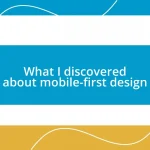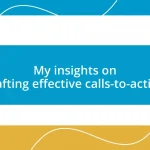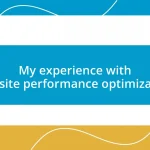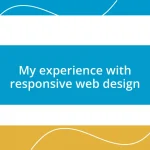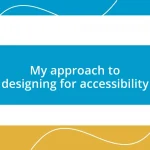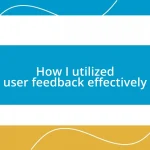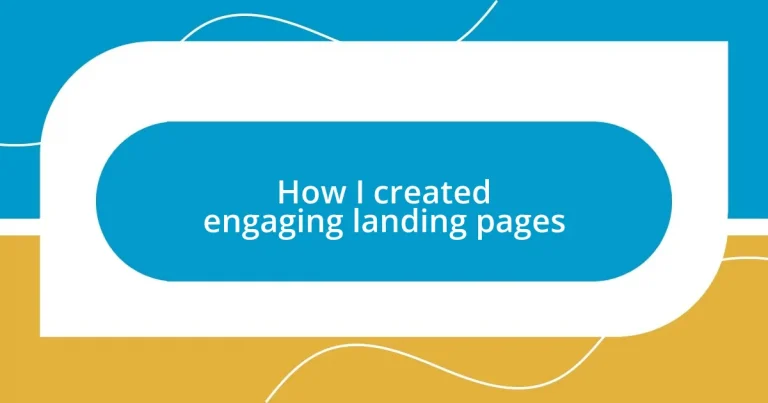Key takeaways:
- Landing pages are crucial for making a strong first impression, influencing visitor emotions, and boosting conversion rates.
- Understanding your target audience’s demographics, psychographics, and pain points is essential for creating resonant landing pages.
- Crafting compelling headlines and effective calls to action can significantly increase engagement and conversions.
- Utilizing social proof techniques, such as testimonials and real-time notifications, can enhance trust and encourage visitor action.
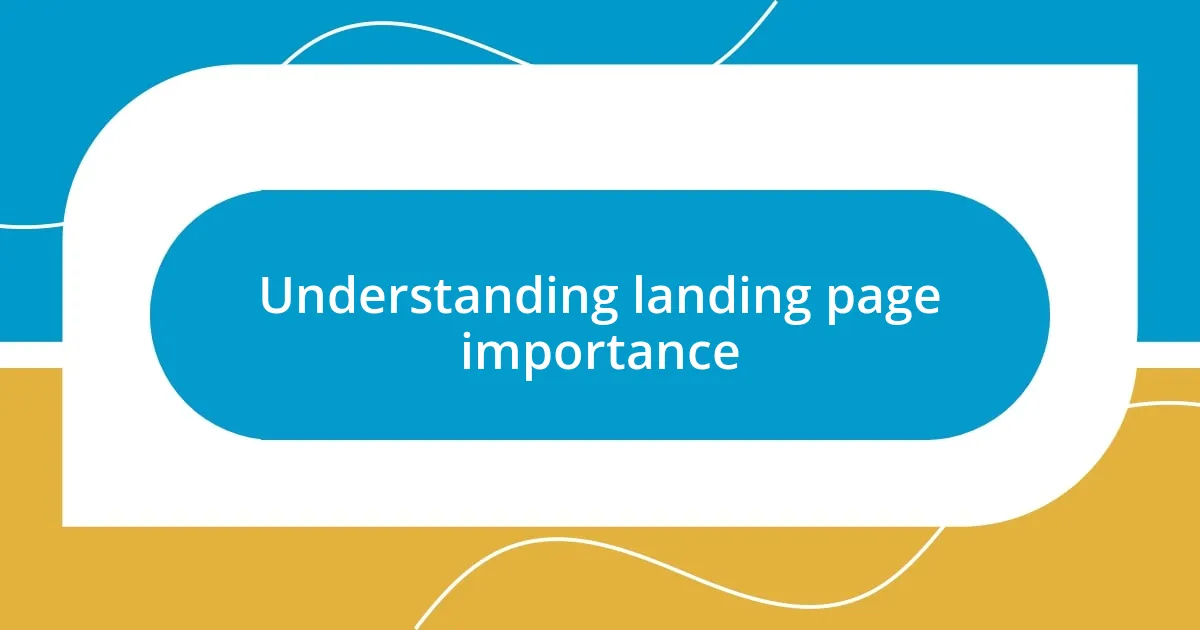
Understanding landing page importance
Landing pages are crucial because they act as the first point of contact between your audience and your brand. I remember when I first launched a project; I had high expectations, but my landing page was so cluttered that it turned away potential clients. Isn’t it interesting how a single page can either invite someone in or push them away?
Consider this: when you’ve got a great product or service, why wouldn’t you want to present it in the best light possible? I once revisited a landing page I created after some months, and the transformation was incredible. Simplifying the layout and honing in on a clear message significantly boosted my conversion rates. It’s a reminder of how important it is to connect with your audience immediately.
Ultimately, a landing page is more than just a digital brochure; it’s a persuasive tool that holds the power to convert visitors into loyal customers. I often ask myself, what emotion do I want the visitor to feel when they land on my page? This question guides every design choice and piece of content, emphasizing the importance of emotional resonance in crafting effective landing pages.
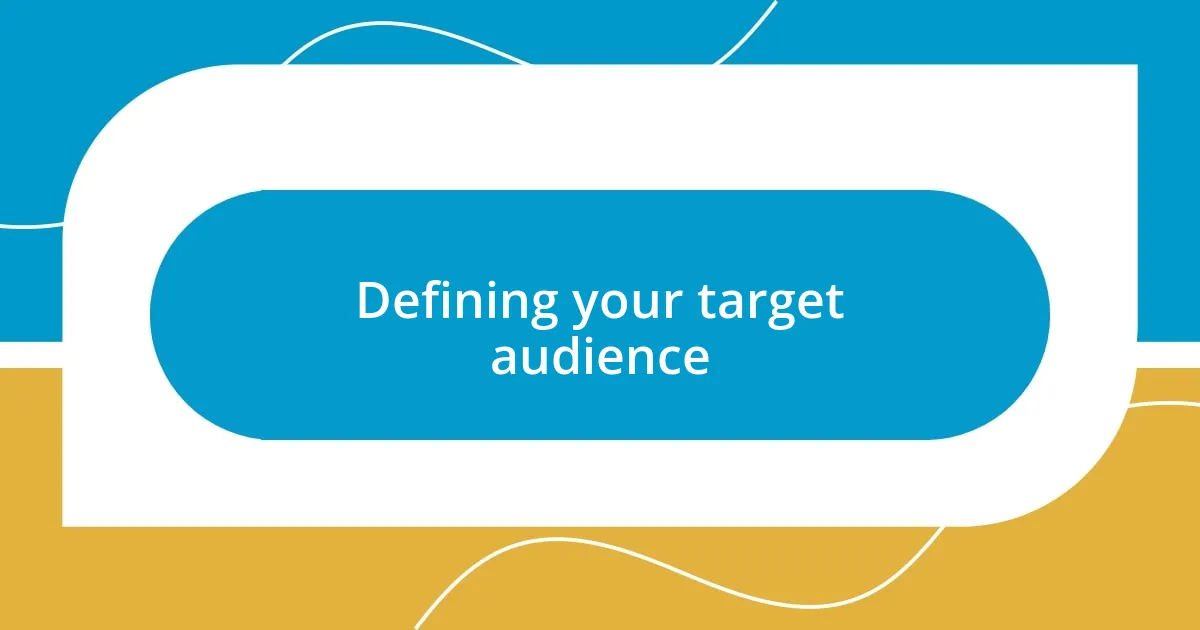
Defining your target audience
Defining your target audience is a pivotal step in creating landing pages that truly resonate. I vividly recall the first time I misunderstood my audience’s needs. The messaging I crafted was way off-mark, and the response was disheartening. It made me realize that knowing who you’re speaking to isn’t just important; it’s essential for building an effective relationship.
Identifying your target audience involves understanding their demographics, preferences, and pain points. I’ve found that creating buyer personas can be incredibly helpful. It allows me to visualize who I’m talking to—almost like having a conversation with a friend. When I tailored my landing page to address specific pain points for my ideal customer, the engagement skyrocketed. It’s fascinating how a little clarity can transform the connection you forge.
Finally, don’t underestimate the power of empathy in this process. Think about how your audience feels and what they truly desire. I once conducted a short survey to gather feedback directly, and the insights were enlightening. This engagement both personalized my efforts and strengthened my landing page, highlighting the importance of truly knowing your audience.
| Criteria | Description |
|---|---|
| Demographics | Age, gender, location, and other statistical data about your audience. |
| Psychographics | Interests, attitudes, values, and lifestyle choices that influence their behaviors. |
| Pain Points | Specific challenges or problems your audience faces that your product can solve. |
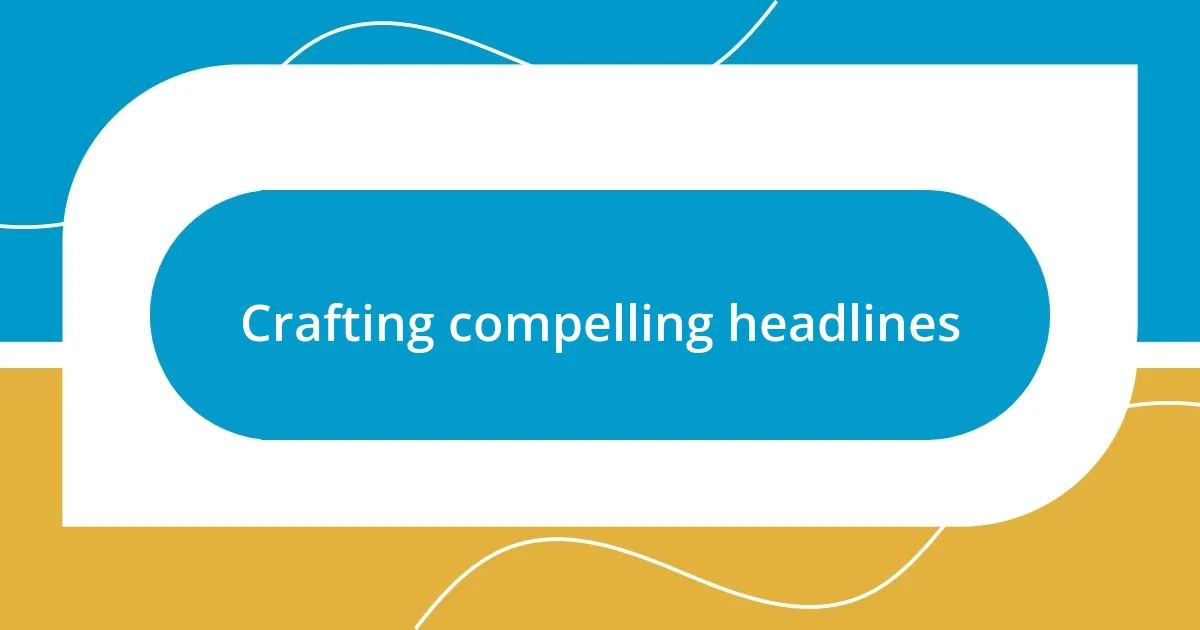
Crafting compelling headlines
Crafting compelling headlines is an art form that can significantly shape the success of your landing page. I remember a time when I struggled with unremarkable headlines that failed to grab attention. One day, in a moment of frustration, I decided to experiment! I replaced a dull headline with a bold question that spoke directly to my audience’s need. The difference was astonishing—my conversion rate shot up like a rocket! It taught me that headlines should evoke curiosity and resonate emotionally, making visitors want to learn more.
Here are some strategies I’ve found effective for crafting compelling headlines:
- Use numbers or lists to promise quick benefits (e.g., “5 Secrets to Boost Your Sales”).
- Create urgency with time-sensitive phrases (e.g., “Limited Time Offer!”).
- Address a specific pain point or desire (e.g., “Struggling to Keep Customers? Here’s the Solution”).
- Incorporate power words that evoke emotion (e.g., “Unlock”, “Discover”, “Transform”).
- Make it personal by using “you” to directly speak to the reader.
Remember, a captivating headline is just the beginning—it should invite the reader deeper into your message.
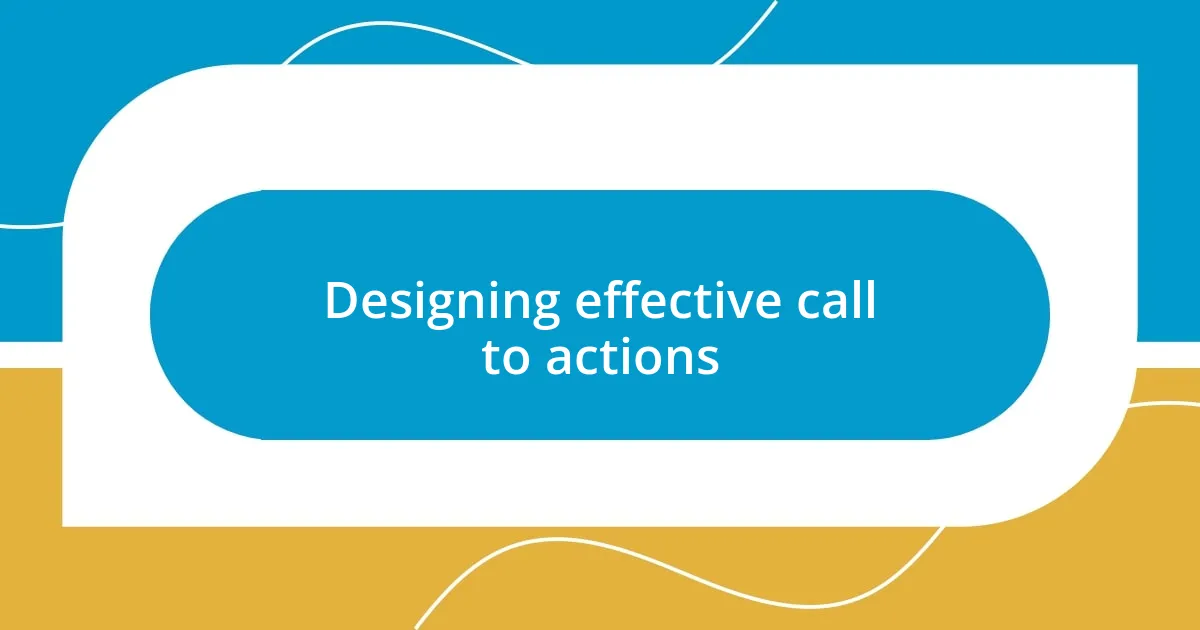
Designing effective call to actions
Designing effective calls to action (CTAs) is critical since they serve as the bridge between engaging content and conversion. I learned this firsthand when a simple “Learn More” button failed to generate interest. By revamping it to say, “Unlock Your Free Guide Now,” I noticed a notable increase in click-through rates. It was fascinating to see how just a few well-chosen words could ignite excitement and urgency.
When crafting CTAs, I think about placement and design as well. A vibrant, contrasting button positioned above the fold can draw attention instantly. I recall a project where I placed the CTA right after a compelling testimonial; the visual connection between social proof and the action button led to a surge in sign-ups. This taught me that the aesthetics and context of a CTA can truly influence a visitor’s decision.
I’m also a firm believer in creating a sense of urgency. Using phrases like “Last Chance” or “Sign Up Today” can change the game. There was a campaign where I included a countdown timer—players could almost feel the pressure build. It not only sparked interest but also instilled a fear of missing out (FOMO)—a powerful motivator. Have you ever noticed how urgency affects your own decision-making? Often, that little nudge can make all the difference in encouraging someone to take that next step.
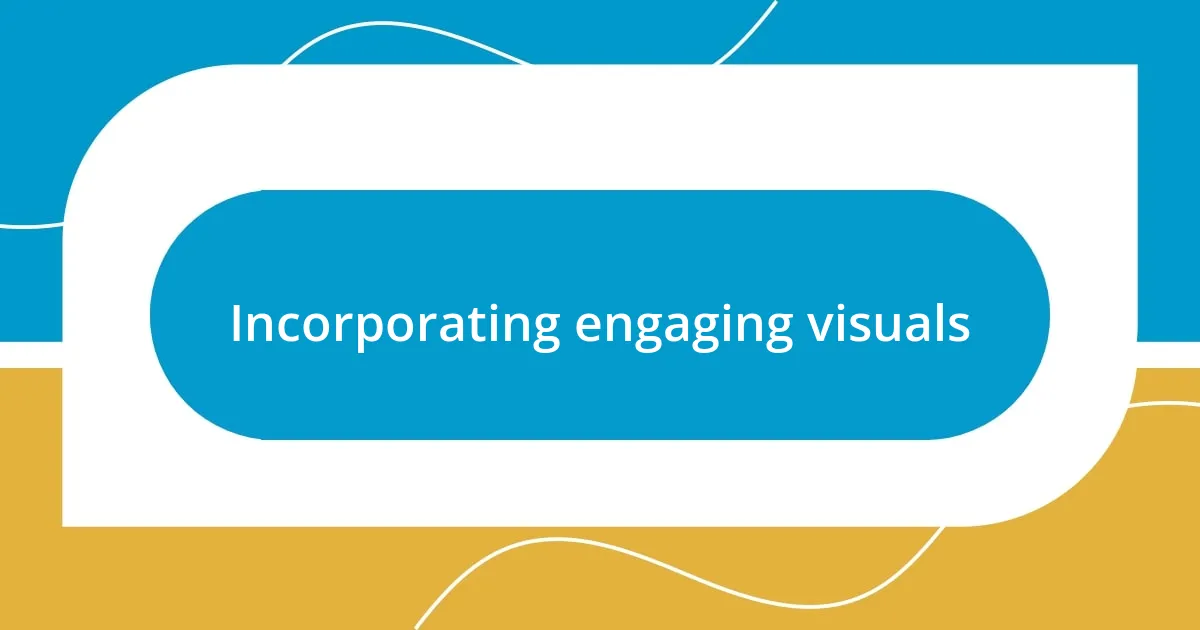
Incorporating engaging visuals
When it comes to incorporating engaging visuals, I always emphasize the importance of quality images and graphics. During one of my projects, I decided to use a striking background image that aligned with my brand message. It was mesmerizing how the right visual could instantly elevate the emotional tone of the page. Have you ever experienced a moment when a single image took your breath away? That’s the potential of visuals—they can forge a connection with the viewer long before words even come into play.
I like to think of visuals as storytellers in their own right. On one landing page, I showcased user-generated content, featuring real customers enjoying my product. The authenticity of those images not only built trust but also inspired potential buyers by painting a vivid picture of community and satisfaction. It’s fascinating how people relate more to what they see in real life rather than stock photos. What kind of stories are your visuals telling? I’ve found that visuals should complement your message, not overshadow it, creating a harmonious blend that guides the audience’s eyes.
Lastly, don’t underestimate the power of infographics and illustrations. I remember creating an infographic that summarized the benefits of a complex service. The feedback was overwhelming—it made the information digestible and engaging in a way that plain text never could. This experience taught me that visuals can make intricate concepts accessible, sparking curiosity and maintaining attention. Have you considered how infographics could simplify your message? Engaging visuals can serve as both a hook and a guide, leading your audience toward understanding and action.
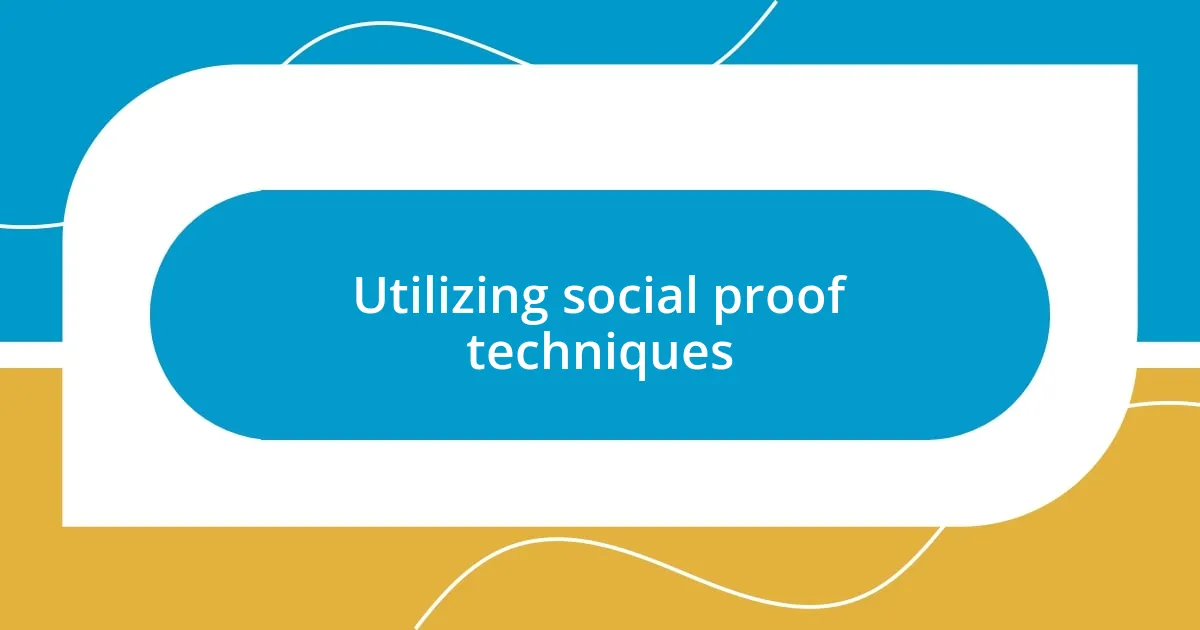
Utilizing social proof techniques
Utilizing social proof techniques can significantly enhance the effectiveness of landing pages. I remember the first time I incorporated customer testimonials. Rather than just listing façades of satisfaction, I highlighted a few heartfelt stories from actual users. It was eye-opening to see how these authentic accounts resonated with visitors. Have you ever paused to consider how much we trust a friend’s recommendation over an advertisement? That’s precisely the emotional pull that sincere testimonials can create.
Another approach I’ve experimented with is showcasing social media mentions and user engagement. There was a campaign where I displayed real-time notifications of sign-ups or purchases. People reacted positively, feeling part of a community that’s actively engaged. I noticed an uplift in conversions almost immediately. Think about it: don’t we all find comfort in numbers? There’s something reassuring about seeing others make decisions in real-time—it’s like a collective nod that says, “Yes, this is worth it!”
Leveraging endorsement from influencers is another strategy I’ve employed. I partnered with a well-known figure in my niche who genuinely used my product. His candid review turned into a powerful endorsement that drove traffic like never before. It’s intriguing how the right endorsement can create a ripple effect, sparking trust even among skeptics. Have you ever made a purchase because a trusted name praised a product? That psychological effect is something I strive to harness on my landing pages.
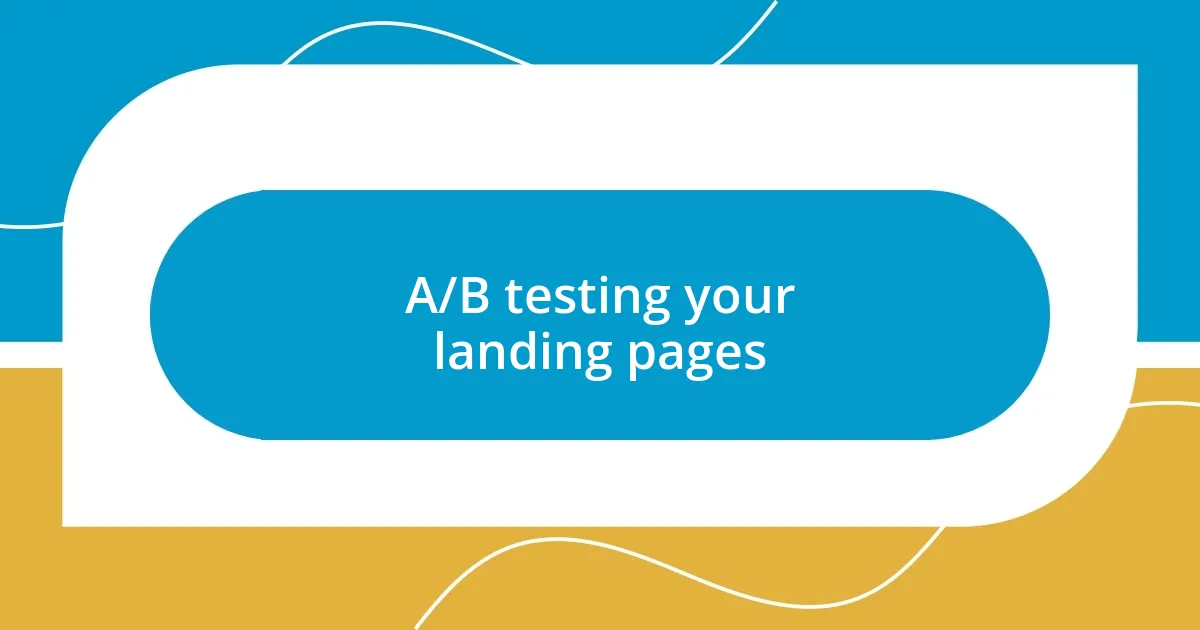
A/B testing your landing pages
When I first dived into A/B testing, it felt like stepping into a realm of endless possibilities. I remember launching two variations of a landing page with different headlines. One read, “Unlock Your Potential,” and the other, “Achieve Your Goals Today.” The difference was subtle but significant—the first option evoked a sense of aspiration that resonated deeply. Can you imagine the small tweaks that can lead to big shifts in engagement? This experience opened my eyes to the power of precise wording and its impact on visitor behavior.
As I continued my A/B testing journey, I experimented with button colors—such a simple change but wow, the results were startling! One iteration featured a vibrant orange button, while the other was a calming blue. To my surprise, the orange button significantly increased clicks. Have you ever noticed how colors can evoke certain feelings? This exercise taught me that even seemingly minor details can dramatically influence user decisions. It’s those little elements that contribute to a larger message about your brand.
I’ve also tested layout variations, moving elements around to see what catches visitors’ attention. On one occasion, I swapped the placement of an image and a call-to-action button. The layout that had the button closer to the eye-catching visual led to a notable boost in conversions. It made me reflect on the importance of flow—how does your page guide the visitor’s journey? I realized every landing page is a canvas, and with A/B testing, you’re the artist, discovering what resonates most with your audience.


